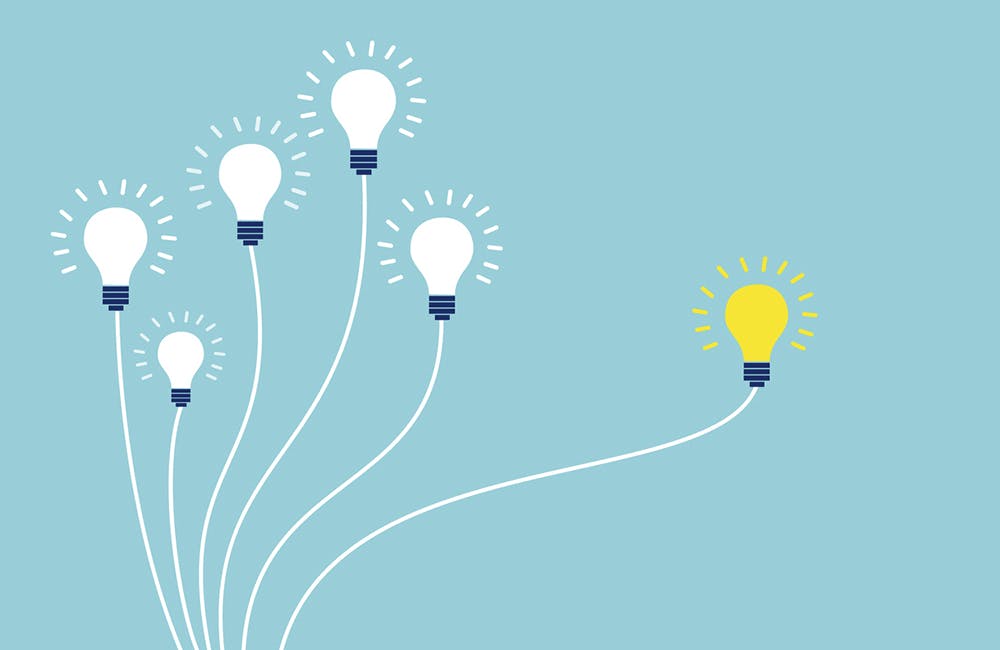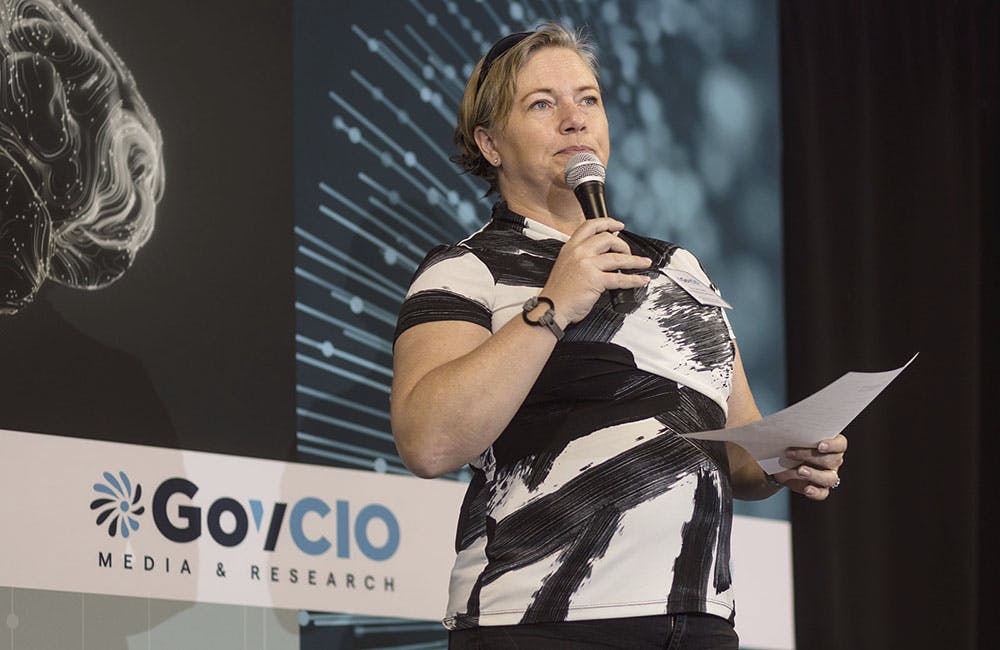CIO-SP4 Emphasizes Reduced Administrative Burden, Emerging Tech
The final RFP for the $40 billion contract is due out early January.

The National Institutes of Health Information Technology Acquisition and Assessment Center (NITAAC) is getting ready to release its CIO-SP4 final request for proposal next month after shifting its in-person plans for industry feedback sessions this year during the pandemic. NIH Office of Logistics and Acquisition Operations Associate Director Brian Goodger, who is also NITAAC’s acting director, broke down what we can expect in the upcoming release.
After the draft RFP’s release earlier this year, NITAAC collected feedback throughout the rest of the year through a series of virtual feedback sessions and had aimed to release the final RFP by now. Goodger said he is currently awaiting key sign-offs and expects to release it between Jan. 11 and 15.
Features of CIO-SP4’s Final RFP
The final RFP for $40 billion government-wide acquisition contract (GWAC) will focus on enabling emerging technologies in IT — such as blockchain, cybersecurity technologies, Agile and “software as a service” — as well as reducing administrative burden on the competitive process behind the GWAC.
“We’ve reduced the number of pages that technical proposals are required to have, as well as the business proposal,” Goodger said. “We set up a unique self-scoring sheet, kind of a streamlined source selection process that we think will be easy on industry and will reduce timelines, and then finally — and probably most importantly — is the push to have one solicitation and one contract, which will reduce everyone’s administrative burden and increase competition and allow for more of a seat at the table for small businesses.”
These features join some of the initial elements NITAAC wanted to build on from CIO-SP3. CIO-SP4’s contract ceiling, for instance, will increase from $20 billion to $40 billion, and NITAAC will double the length of its fee receipt collection timeline. The performance period in CIO-SP4 will also halve from 10 to five years, further emphasizing that reduced administrative burden, Goodger said.
“It’s not a 10-year guarantee — it’s a five-year guarantee — and the reason for that is the ramp-on is too much of a burden on industry. It was too much a burden on government,” Goodger said. “While we reserve the right to do the ramp-on again, five years after award, it’s probably unlikely that we will.”
What NITAAC will do, Goodger said, is allow existing NITAAC contractors at the five-year mark to add to their task areas and also off-ramp companies who aren’t performing well.
Ramping-off contractors, on top of the reduced administrative lift, enables greater competition among contractors, Goodger said, adding that these features all aim to help their customers, the federal IT community.
“NITAAC is there to serve an IT customer,” he said. “Those IT customers are across government program directors, division directors, program analysts, anybody who has an IT hat, so they have IT dollars and IT needs to get them on contract to fulfill their mission of their agency or department. We want them to look at NITAAC as a friendly place, as an organization that can help them move the ball across the finish line and in doing so, the most important thing for us to do is obviously get a good breadth of companies, small and large, but also get some companies that understand the value of customer service.”
CIO-SP4 in 2021 and 2022
Despite the slight delay in the final RFP release, CIO-SP4’s timeline overall is still on track. Since the RFP will roll out a couple of weeks later than expected, questions and comments will not be due until Feb. 1, and NITAAC will extend the proposal due date to March 15, Goodger said.
Once proposals are submitted, NITAAC will review them and form technical evaluations through the spring and summer. By early fall 2021, NITAAC will do a source selection award process, in which Goodger said he anticipates also reviewing the bulk of any potential protests for the contract.
This process in 2021 will lead the final CIO-SP4 award issuance deadline of Jan. 31, 2022 — a month later than initially proposed — and a period between February and April 2022 to review any final protests.
In spring of 2022, CIO-SP3 will also come to a close, marking the full transition to the new GWAC. As the proposal process begins this coming year, Goodger emphasized that he wants to engage more agencies and companies in the new contract to push technological transformation, Agile methodologies and competition among the contractor community to improve government IT.
This is a carousel with manually rotating slides. Use Next and Previous buttons to navigate or jump to a slide with the slide dots
-

Opinion: Original Intelligence Is the Missing Piece for AI Transformation
Limitations of AI agents and development drive growing needs for workforce development and "original intelligence."
3m read -

VA CIO Targets Modern IT and Smarter Workforce Alignment
Agency leaders told lawmakers they are focused on trimming legacy systems and restructuring its workforce to streamline operations.
3m read -

Pentagon's $200M AI Contracts Signal Broader Effort to Transform Talent
The Army is leveraging Silicon Valley, reservist programs and new hiring strategies to integrate critical digital skills in its ranks.
5m read -

AI Foundations Driving Government Efficiency
Federal agencies are modernizing systems, managing risk and building trust to scale responsible AI and drive government efficiency.
43m watch -

Inside DOD’s Push to Grow the Cyber Workforce Through Academia
Diba Hadi gives her first interview since becoming principal director of the DOD’s Cyber Academic Engagement Office.
15m listen -

Agencies Tackle Infrastructure Challenges to Drive AI Adoption
Federal agencies are rethinking data strategies and IT modernization to drive mission impact and operational efficiency as new presidential directives guide next steps.
5m read Partner Content -

Generative AI Demands Federal Workforce Readiness, Officials Say
NASA and DOI outline new generative AI use cases and stress that successful AI adoption depends on strong change management.
6m read -

The Next AI Wave Requires Stronger Cyber Defenses, Data Management
IT officials warn of new vulnerabilities posed by AI as agencies continue to leverage the tech to boost operational efficiency.
5m read -

Federal CIOs Push for ROI-Focused Modernization to Advance Mission Goals
CIOs focus on return on investment, data governance and application modernization to drive mission outcomes as agencies adopt new tech tools.
4m read -

Fed Efficiency Drive Includes Code-Sharing Law, Metahumans
By reusing existing code instead of rewriting it, agencies could dramatically cut costs under the soon-to-be-enacted SHARE IT Act.
5m read -

Agencies Push Data-Driven Acquisition Reforms to Boost Efficiency
New initiatives aim to increase visibility of agency spending, improve data quality and create avenues to deploy solutions across government.
5m read -

Data Transparency Essential to Government Reform, Rep. Sessions Says
Co-Chair of the Congressional DOGE Caucus Rep. Pete Sessions calls for data sharing and partnerships to reduce waste and improve efficiency.
5m read
















